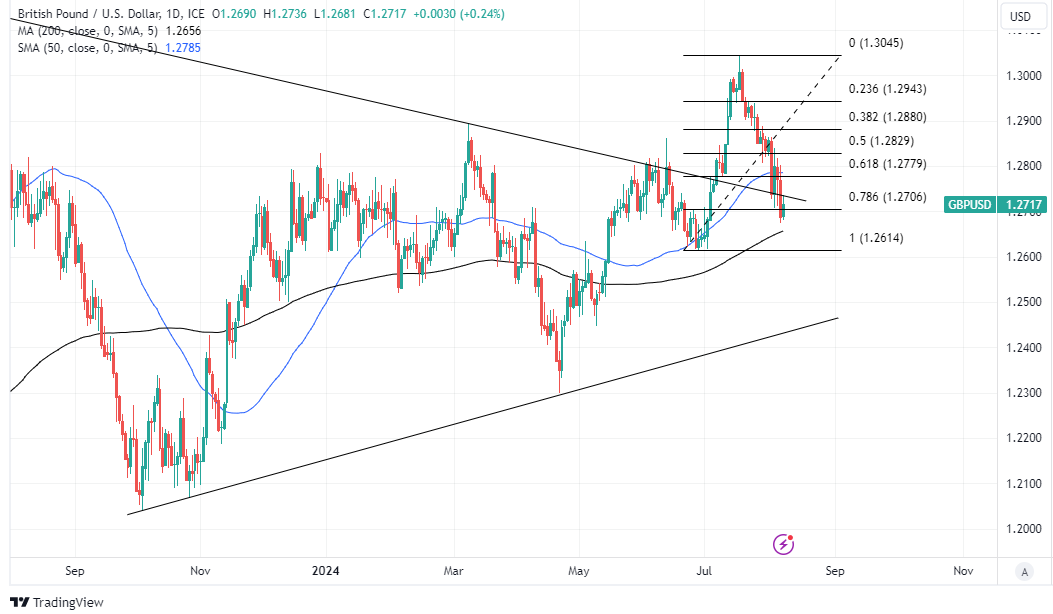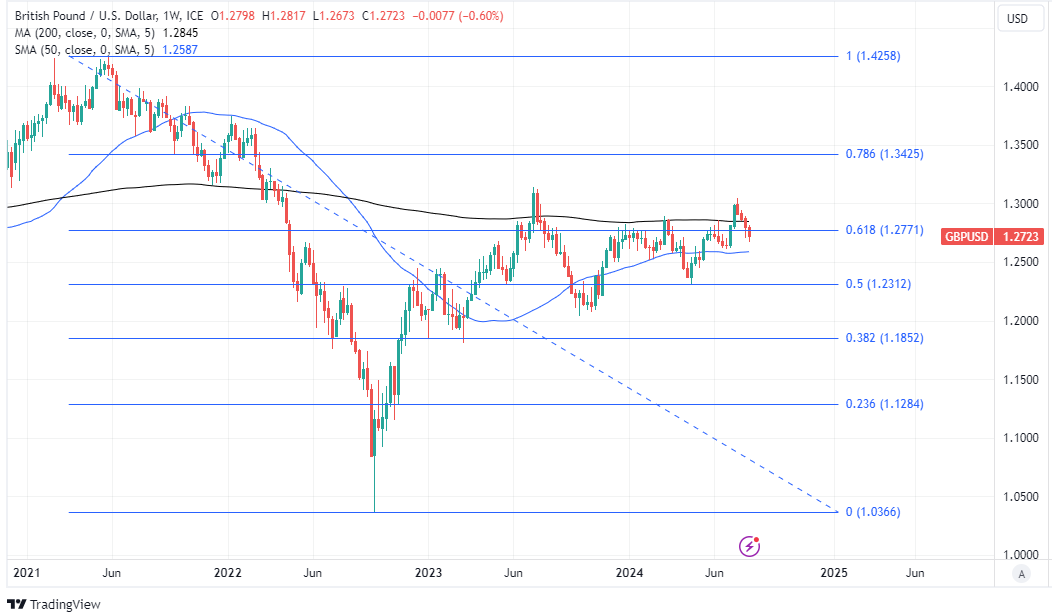GBP/USD Rate Facing Technical and Fundamental Headwinds

Image © Adobe Images
The Pound to Dollar exchange rate stabilised around one-month lows on Wednesday but it faces technical and fundamental headwinds that could complicate any attempt at recovery in the days and weeks ahead.
GBP/USD reclaimed the 1.27 handle and the 78.6% Fibonacci retracement of its July uptrend on Wednesday as global markets rallied back from recent losses following dovish remarks from a Bank of Japan policymaker.
Global markets have calmed, undermining appetite for safe-havens like the Japanese yen and Swiss franc while offering respite to high beta and high carry currencies following a vicious sell-off over the last week.
This has arrested a sharp decline in GBP/USD that dates back to last Thursday’s interest rate cut from the Bank of England, though Sterling is not yet out of the woods, despite its tentative stabilisation.
“GBP is one of the weakest links in this risky asset rally. Much as CAD showed incredible strength when stocks were collapsing, GBP is showing tremendous weakness now,” said Brent Donnelly, CEO at Spectra Markets and a veteran of a career spent between hedge funds and major banks like HSBC, Nomura and Lehman Brothers.
Above: Pound to Dollar rate shown at daily intervals with Fibonacci retracements of July rally, and 200-day moving average indicating possible areas of technical support. 50-day average and trend lines denoting a narrowing symmetric triangle highlight possible technical resistances.
Sterling’s recent losses have seen GBP/USD substantially unravel its July breakout above the top of a narrowing symmetric triangle on the daily charts, leaving it facing multiple technical headwinds to any attempted recovery including its 50-day moving average around 1.2785.
“The GBP is steadying but the broader, short-term downtrend from the mid-July peak above 1.30 remains intact,” said Shaun Osbourne, chief FX strategist at Scotiabank. “Sterling may be finding support around the high 1.26 zone where the 100– and 200- day MA signals are converging (1.2684 and 1.2658 respectively).”
The Pound to Dollar rate must overcome its 50-day moving average and regain the 200-week moving average around 1.2845 over the coming weeks in order to keep the recovery from April’s lows intact. However, Sterling also now faces fundamental headwinds stemming from the Bank of England’s outlook for inflation.
This is because the BoE projected last Thursday that inflation will likely rise again from here, to 2.75% by year-end, which suggests scope for a trend shift to the downside in GBP/USD. The pair has been negatively correlated with the twists and turns in the UK inflation rate over recent years.
GBP/USD bottomed out in September 2022 following a lengthy decline and just before the UK inflation rate topped out around 11.1% in October, while it topped out previously in January 2021 following a lengthy rally and just after inflation bottomed out around 0.3% in October 2020.
Above: Pound to Dollar rate shown at weekly intervals with Fibonacci retracements of January 2021 downtrend indicating possible areas of technical resistance. Selected moving averages denote either support or resistance. Click image for closer inspection.


